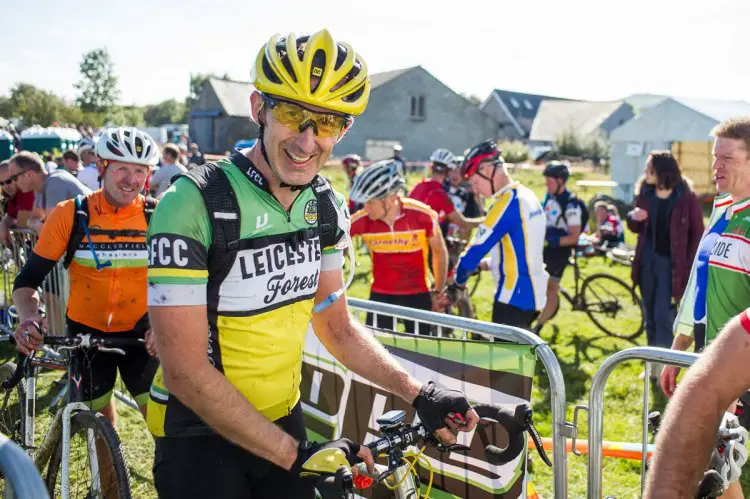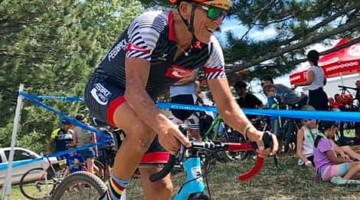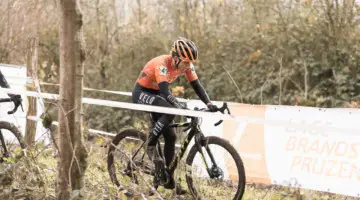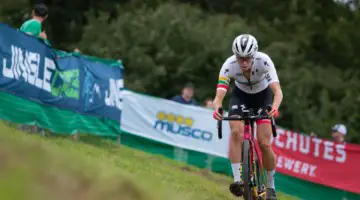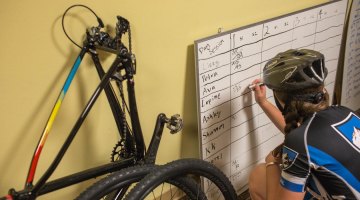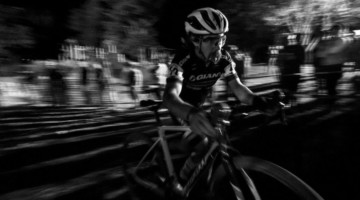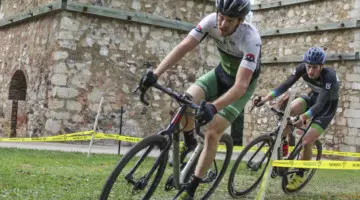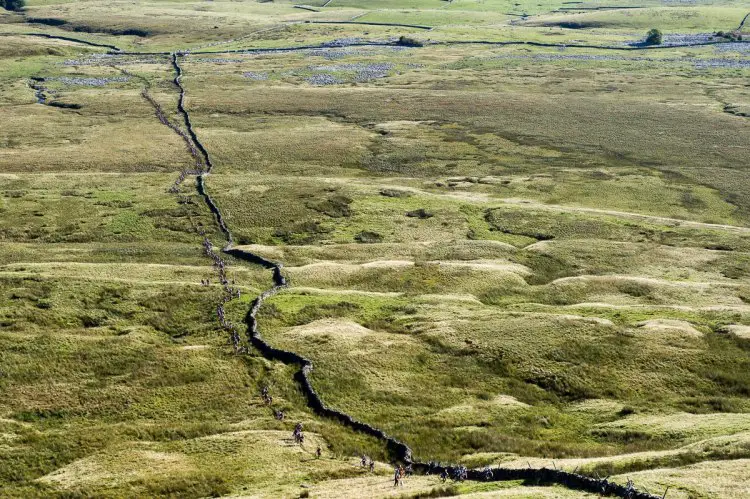
The 3 Peaks is a daunting course for beginners and advanced riders alike. © Jack Chevell / www.jackchevell.com
Back in July, one of our European contributors, Andy Ward, set off on training for the 3 Peaks Cyclocross Race, and created a beginners guide for all aspiring cyclists to tackle the race for the first time. After months of training on the bike and climbing to the office, Ward finally tackled the 3 Peaks this weekend. Paul Oldham of Hope Factory won the race with a time of just under three hours with Jules Toone winning the Female division in just under four hours. Stay tuned for a full race report.
Ward finished impressively among the mid-pack, arriving in at a time of 4:21:39 withe the plan to do better next year. Today, he offers some big lessons learned.
by Andy Ward
I did it! After twelve weeks of near obsessive preparation, thinking of little else, I’ve bagged my first 3 Peaks Cyclocross Race. On a day when the sun decided to shine on Yorkshire, I dragged myself round the legendary course, finishing with bike and body more or less intact. What were the lessons I learned from my experience? What would I take into next year’s event? Here are my newbie’s top tips:
Get Your Bike Right
The race is hard on your bike. The rattling descents will shake off anything that is loose, dislodge a chain and maybe even knock out your fillings. I ran a Wolf Tooth Drop Stop chain ring with a Type 2 SRAM mountain bike derailleur and my chain stayed put. Others weren’t so lucky.
The 34 tooth single chainring set up turned out to be perfect. Not once did I wish for a higher gear, even on the road sections. Cross top brake levers were a brilliant addition, giving me the chance to relieve the pressure on my arms and shoulders whilst controlling my speed on the rocky descents of Whernside and Pen y Ghent. The Smart Sam tires at 70 psi gave decent grip in the boggy sections and did not puncture despite some big hits on the rocky sections.
My single-bolt seatpost saddle clamp did not cope with a heavy crash on Pen y Ghent (right in front of the cxmagazine.com’s Steve Smales) and I rode most of the descent with my saddle at a fairly alarming angle. Next time I’ll fit a heavier duty twin-bolt clamp.
Strapping my rolled up survival bag to the top tube to cushion my shoulder seemed like a good idea, but in reality it worked loose and became uncomfortable as the climbs went on.
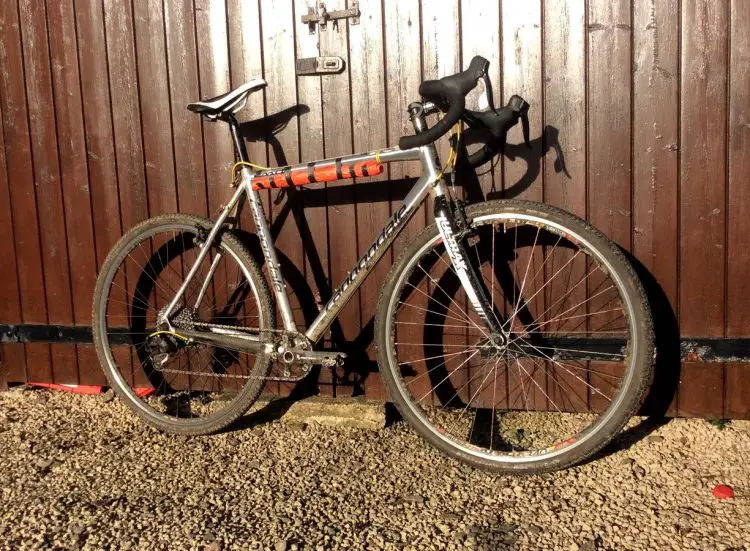
The 3 Peaks bike: Reflecting back on the unfortunate choice of the single-bolt mount, which allowed the saddle to rocket upward. © Andy Ward
Get Your Body Right
Before the race all the talk was on how tough the course would be, in particular the steep, unrideable climbs. Simons Fell is the most infamous of these with its 45 degree gradient. No amount of reading and researching can prepare you for the stupidness of this climb.
All my practice, carrying the bike over and over again up the steepest local hill, did help to some degree. I actually felt quite strong as the hill levelled out. The problem with the 3 Peaks is that Simons Fell is just one relatively small part of the race. The longer climbs of Whernside and Pen y Ghent probably took more out of me.
I will endeavour to do more sustained climbs in my training next year. The upper body also takes a pounding as you battle to control your bike on the descents. Post-race, my triceps ache almost as much as my quads. Some upper body strengthening exercises are a really good idea. Without the Body Pump classes I have been doing, I’m sure I would have suffered more.
Get Your Food and Fluids Right
A four to five hour ride wouldn’t normally cause me much stress on the food and water front, but this was definitely different. I hydrated thoroughly the night and morning before and carried a Camelbak instead of a bottle. Lost bidons punctuated the route on the more rattly sections, suggesting I made the right decision. I spent the first part of every road section getting the calories in before concentrating on making up time and working in a group.
Get Your Head Right
The start is something of a chaotic affair, with 650 riders jammed into a narrow street so tightly that it’s impossible to mount your bike without kicking your neighbour.
This was fairly nerve-wracking as I struggled to imagine how we could all get going without a mass pile up. Fortunately chatting to the riders around me calmed my anxiety and when the start did come, it was significantly less dangerous than my last league race.
The long climbs can mess with your psyche as I found on Pen y Ghent. I felt like the summit would never come, that my legs had gone and I was going rapidly backwards through the field. Analysing the results later it turned out I was no slower up that climb than up the other two and that I actually reached my highest position in the race when I checked in at the summit.
Enjoy It!
The 3 Peaks is a fantastic event. Friendly, well run and in one of the most beautiful parts of the country. The atmosphere is marvellous, with shouts of encouragement from the numerous spectators and banter between riders on the slow climbs. The thoroughly Yorkshire commentator adds to the entertainment.
A few seconds to look over your shoulder at the top of Simons Fell will reward you with one of the most spectacular views in England. Pre-race, I was nervous about the descents – in the end, they were the most fun I’ve had on my cross bike in ages (painful endo’s on Pen y Ghent excluded).
Overall, the 3 Peaks was the toughest, but best experience I have ever had on two wheels. I was delighted with my finishing time of 4 hours 21 minutes, but I’ll definitely be back next year to try and beat it.
You can follow Andy Ward on his next adventures through twitter @awkwardcyclist













